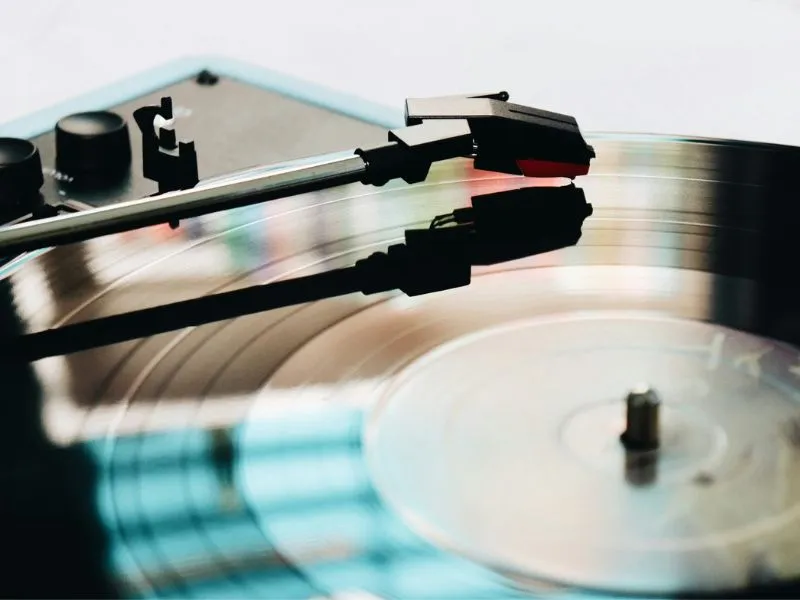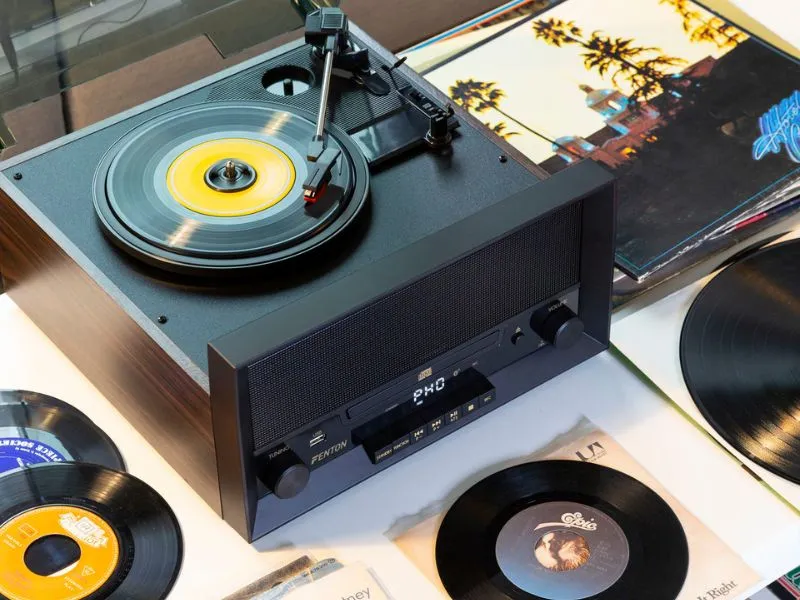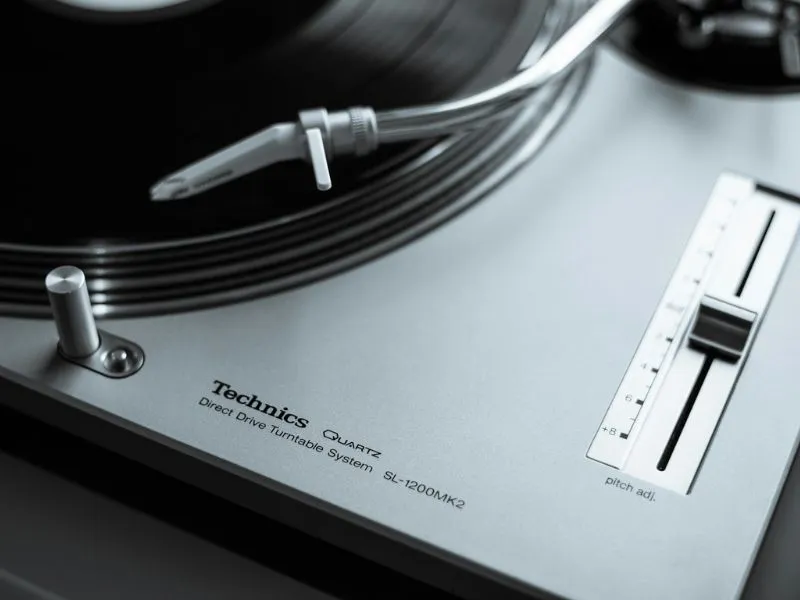Belt Drive Vs Direct Drive Turntables
Types of Record Player
When venturing into the world of vinyl records, one of the primary choices a newcomer or seasoned audiophile faces is selecting the right type of turntable. For many people, the choice between belt drive and direct drive turntables is a significant one and can greatly alter the user experience.
Each turntable drive system has its own unique set of characteristics that affect not only the sound quality but also usability and suitability for different applications. This article aims to clarify the two main types of turntable drives, exploring their differences, benefits, and particular uses in various settings.
Whether you are a DJ looking to mix tracks or a music enthusiast keen on the best sound from your vinyl collection, understanding these differences is an important part of making an informed decision.
Belt Drive or Direct Drive - What’s the Difference?
The core difference between belt drive and direct drive turntables lies in how the motor connects to the platter on which the record spins. Belt drive turntables feature an independent motor that drives the platter via an elasticated rubber belt. This belt naturally absorbs vibrations and minimises any motor noise from being transmitted to the platter, which can result in clearer audio with less background noise.
The belt-driven design is by far the most commonly found in record players, from budget units to Hi-Fi designs, and is the favoured choice for vinyl enthusiasts as it allows for any type of platter to be rotated smoothly (some high-end turntables use thick glass platters for instance).
On the other hand, direct drive turntables integrate the motor directly beneath the platter, with the spindle being the actual motor shaft. This design offers quicker start times and more consistent speeds, making it a favourite among DJs. The direct connection allows for more precise control over the platter, essential for scratching and mixing tracks. However, this can sometimes introduce rumble from motor noise into the audio output, though advancements in damping technology have significantly mitigated this issue in high-quality direct drive models.




Which Type of Turntable Drive is Best?
Deciding which type of turntable drive is best depends largely on the user’s needs and preferences. Belt-driven models are generally much simpler in design with very little to go wrong. They are however quite delicate in comparison to their direct drive counterparts which are designed with a more ‘hands-on’ life in mind, so must be treated with care.
Belt drive turntables are considered better for general listening and those who prioritise sound quality above all. The belt’s buffering effect naturally reduces and absorbs vibrations that can disturb the stylus’s tracking of the vinyl grooves, thus maintaining a cleaner, more authentic sound.
Conversely, direct drive turntables offer benefits that make them superior for DJs. Known for their immediate responsiveness, the direct drive system is ideal for manipulating the record, providing DJs with the ability to precisely control playback for perfect beat matching and scratching. The platters themselves are designed for rougher treatment, and the plinths are more resistant to external vibrations, like those from loudspeakers at a club or event.
Why Do DJs Use Direct Drive Turntables?
DJs predominantly use direct drive turntables because of their robustness and operational capabilities, which are essential for live performances. The direct drive’s motor provides a high torque, meaning the platter reaches the desired speed almost instantaneously and pulls the vinyl under the hand—vital for live mixing and matching beats. They will also include a pitch control for manual adjustment of the platter speed to allow for beat matching between two tracks.
This design facilitates easier and quicker manipulation of the vinyl, with the constant force also ensuring that the turntable is less susceptible to needle skipping during techniques such as scratching, or when there are external vibrations from louder sound systems.
Moreover, the durability and reliability of direct drive turntables make them suitable for the demanding environment of DJing. Frequent transport and use in various venues require equipment that withstands such rigours, and direct drive systems are well-suited to this task. Additionally, many modern direct drive turntables come with features like adjustable torque and reverse play capabilities, specifically included to appeal to DJs.


Read More...
The Pros and Cons of Belt Drive and Direct Drive Turntables
The debate between belt drive and direct drive turntables continues as each offers distinct advantages and disadvantages. Here’s a deeper look:
Belt Driven Turntables
Pros:
- Sound Quality: The isolation of the motor and the use of a rubber belt greatly reduces vibration transfer, enhancing sound clarity and quality.
- Price: Belt drive turntables come in many quality levels, with entry-level players being far cheaper than direct drive units and offering excellent value for those new to vinyl.
- Simplicity: The components of a belt drive system are very basic, with many record players being very minimalistic in features and layout. They are intended to be as simple to operate as possible.
- Designs: Due to its more basic design, the belt-driven mechanism can be integrated into a wide range of plinth shapes, with everything from traditional Hi-Fi styles to popular briefcase portable designs.
Cons:
- Speed Inconsistency: Over time, the soft rubber belts can wear or stretch, leading to variations in platter speed and pitch issues.
- Quality: Many lower-cost turntables use all plastic platters and tonearm assemblies which while obviously reducing cost, can feel cheap compared to the much sturdier metal platters of a DJ-style turntable.
- Size: Many modern belt drive players use a compact platter (7 to 10”) for a more compact layout. A standard 12” record will obviously overhang this while being played, which is perfectly fine, but obviously lacks the support of a full-sized platter.
- Maintenance: The belt may need to be replaced periodically to maintain performance and audio quality, and as with all turntables, the stylus itself is a perishable item that degrades with use and will need to be replaced when worn.
Direct Drive Turntables
Pros:
- Speed Accuracy: Direct drive systems maintain consistent speed thanks to immediate motor control, crucial for accurate playback and professional DJing. Most DJ turntables include a platter stroboscope for visual reference of the speed accuracy.
- Durability: Lacking the belt component, these turntables generally require less maintenance and are far more durable in their overall construction.
- Quality: Due to the nature of DJ work, most direct-drive turntables are built significantly tougher to handle the more hands-on use and constant interaction they will likely endure.
- Design: Most direct drive turntables take their inspiration from the classic Technics SL series used in clubs for decades. This tried and tested design offers a simple yet ergonomic layout, with a physical presence that has made it a recognisable icon in pop culture.
- Adjustment: Direct drive record players, especially those designed for DJ use, will usually feature far more adjustment capability than a belt-driven player. The tonearms are usually more sophisticated and allow for the use of different cartridges, with adjustable counterweights and anti-skate tracking systems.
- Weight: Heavy is good. Mass helps absorb unwanted vibrations and provides a stable platform for vinyl playback. A unit such as the Technics SL1210 is approximately 12kg, offering superb noise characteristics compared to the 1kg of a basic belt drive record deck.
Cons:
- Noise: Older or lower-quality models may transmit motor noise to the audio output through vibrations (known as rumble)
- Cost: High-quality direct drive turntables can be more expensive, reflecting their advanced technology and features.
- Size: Direct drive decks tend to be aimed at DJ use, with the inclusion of pitch controls and larger tonearm systems along with shock-absorbing bases and full-size 12” platters. This means they can be quite large.
- Complexity: With the motor system, usually a pitch control, platter lighting, plus any additional features, there can be quite a lot happening within a modern DJ turntable. This can mean electrical gremlins and faulty components are more common than with a basic player.
Buying Considerations for Turntables
When purchasing a turntable, whether belt drive or direct drive, consider the following features:
- Torque: Higher torque in direct drive turntables means quicker start and stop times. This may or may not be something you need, and it's generally only a requirement for DJs to use when they need a track to start up immediately or when holding back the record during queuing up, as the platter is powerful enough to continue spinning under it (a belt drive platter will just stop under hand pressure).
- Platter Material: Heavier platter materials, like metal or acrylic, help reduce vibration and stabilize record play over lower-cost plastic designs. There is nothing wrong with plastic, it will get the job done just fine and it doesn't subtract anything from the playback experience, but also doesn't enhance it either.
- Tonearm & Cartridge: The quality of the tonearm and cartridge significantly affects how well the stylus reads the record grooves. Basic turntables and the popular portable designs all tend to use a moulded cartridge, so you are limited to that specific stylus type. Better systems allow for full cartridge upgrades, along with the adjustment of the tonearm counterweight and physical height to suit different cartridge and stylus designs.
- Adjustability: Features like adjustable anti-skate and counterweight settings allow for fine-tuning of the needle’s tracking and pressure, optimizing sound quality and protecting records.
- Pitch Control: This allows for a record playback speed to be altered within a specified percentage range of the standard 45 or 33rpm speeds, and it's an absolute necessity for DJ use, though can also be a great addition for normal playback.
- Preamp: An often confusing point for potential record player buyers. Traditionally, turntables were a direct signal output, known as ‘phono’ level. Amplifiers would feature a dedicated ‘phono’ channel designed for this ultra-low signal. Many DJ turntables including the famous Technics SL series were built this way, designed to feed into an audio mixer (which is a preamp). A standard line level or ‘Aux’ input on more modern stereos and amplifiers will not accept this signal directly.
Most modern record players however now include built-in preamplification, providing their output as a standard RCA line-level connection.
Technical Differences
The technical distinctions between the two drive systems extend to aspects like motor design, control mechanisms, and build quality. Belt-driven models often incorporate decoupling techniques to further isolate sound-critical components from vibrations, while direct drive systems focus on precise motor control technology and sturdiness.
It's two different methods to get the same result, with both having their own good and bad points. The main decision maker outside of outright cost will be intended use, and this should be your main focus when looking at the suitability of a turntable.
In conclusion, the choice between belt drive and direct drive turntables hinges on your specific needs: pure sound fidelity or robust, precise control for live performances. Understanding these differences and considering the intended use will guide you to the best turntable choice for your vinyl adventures.


